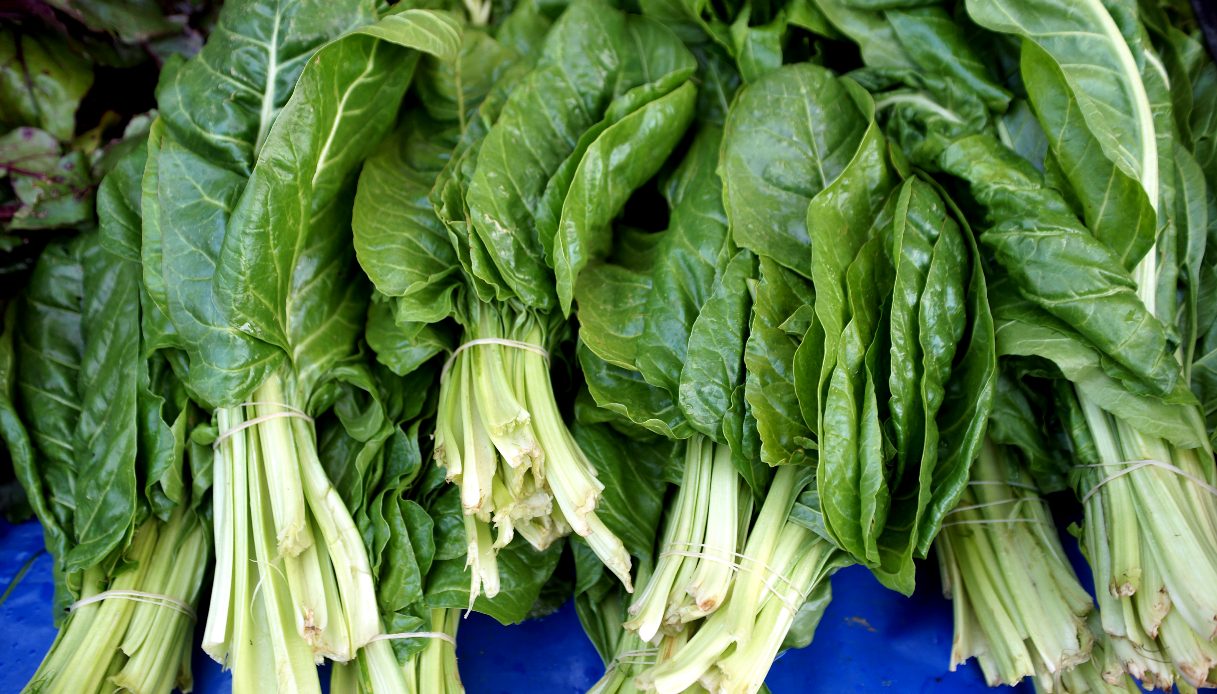the beets, definite also “coasts”, are plants with a herbaceous stem and large green leaves, glossy, of intense color, with developed central veins. Belonging to the family of Chenepodiacee, the same as the garden beets, are harvested in the winter months, but November it is certainly the one in which they are best.
They taste sweet and eat them both the leaves and the core part tender and meaty. Not to be confused with i cardi, because the beets are composed of leaves and ribs, while the thistle is a vegetable of which only the coast is consumed.
Nutritional properties
The red variety is rich in:
- Vegetation water, which contributes to good hydration of the body.
- Fibre. They are useful for speeding up the intestinal transit in those suffering from stubborn constipation.
- Also excellent is the presence of potassium, which makes chard an ideal food in sports diet who are doing important muscle work with a high consumption of potassium and salts.
- Vitamin A, or retinol, very important for ours vista since together with its precursors, carotenoids, it is part of the components of rhodopsin, the substance present on the retina that gives the eye sensitivity to light. Vitamin A is also useful for it bone development and for their strengthening over time, for the growth of the teeth and is distinguished by its ability to provide an immune response to our body.
- C vitamin, essential for the elasticity of the skin and capillaries, for the nervous system and psychological functions, for the immune system and as an antioxidant against oxidative stress.
- Magnesium, essential for the synthesis of proteins, lipids (fats), nucleic acids and for the metabolism of glucose, with functions that affect the nervous system and tiredness, cardiovascular, diabetes, metabolic syndrome and weight management.
- Football, vital for the health of bones and teeth, muscles, circulatory and digestive systems.
- Iodine, useful for the synthesis of thyroid hormones.
- Ferro, a key component of hemoglobin, the protein that carries oxygen from the lungs to the rest of the body, and myoglobin, the protein that supplies muscles with oxygen.
The coasts, on the other hand, are also very rich in:
- Chlorophyll, to which properties are attributed detoxifiers and above all antioxidants, which help defend the body from the negative effects of free radicals.
- Vitamin E, the most widespread and common among vitamins, with antioxidant and anti-free radical properties, promoting cell renewal.
- Sugars.
It is also important to point out that beets are among the vegetables with the highest content in oxalic acid, which hinders – with its presence – the assimilation of calcium by the intestinal mucosa. Both varieties are also vegetable of not easy management, as they are too rich in potassium and sugars, which is why they should be used as attention in the diabetic, especially if one already coexists impaired renal function.
Uses in cooking and recipes
To purchase, it is necessary to verify that the leaves of the chard have a bright and intense color, that they are shiny, consistent and fragile to the touch. The cores instead must be fleshy, of a beautiful white color, and break with a dry sound.
Of the plant both the ribs and the leaves are used and can be used for the preparation of pizzoccheri from Valtellina. In addition to being boiled and sautéed in a pan, flavored to taste, it can be made into flans and it is very popular as a substitute for spinach. The leaves are perfect for omelettes and salted djote tarte. With the ribs – which is important to be deprived of their filaments before preparation – delicious quiches, cakes, soups and gratins are flavored. In short, these vegetables can be prepared the most varied recipes.
I nutritional biotherapists then suggest some combinations: the red chard, for example, it is almost always used all’agro, that is boiled and seasoned with oil and lemon. Instead, to preserve its electrolytic and saline heritage, it can be sautéed in a pan with onion and tomato in such a way as to have a perfectly balanced association.
But beware of the cooking. More fibrous, the ribs require longer cooking times than the leaves: from 10 to 15 minutes. If you want to prepare everything in the same pan, the advice of the experts is therefore to reduce the hardest part to smaller pieces, such as the ribs, which will cook more quickly, and to larger pieces the part of the leaves. In this way the cooking will be more uniform.
Contraindications
For its mineral salts, chard should be used with caution by people with kidney stones from calcium oxalate, but also from those suffering from osteoporosis and in hypocalcemia.
.
